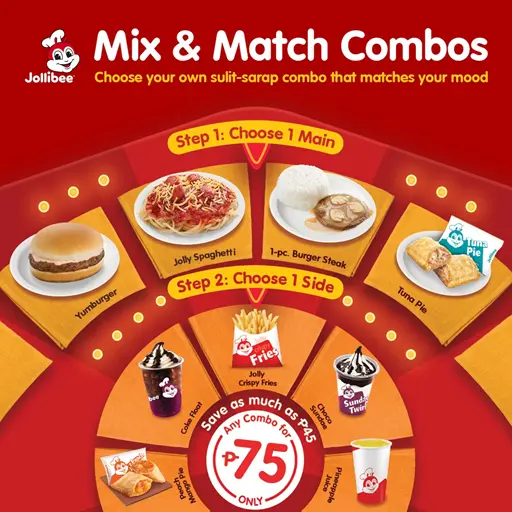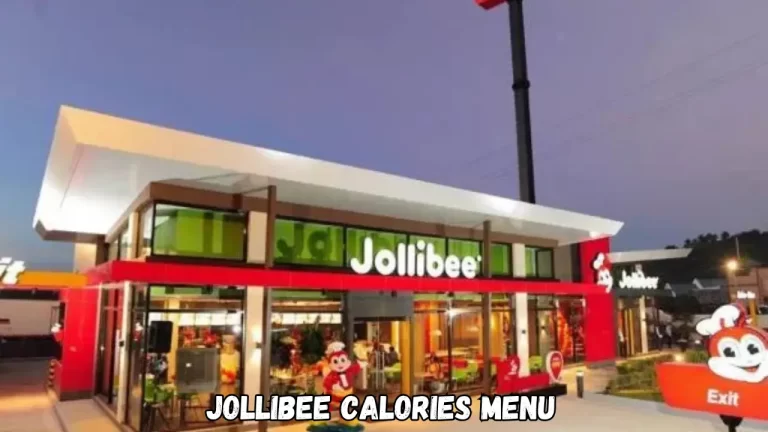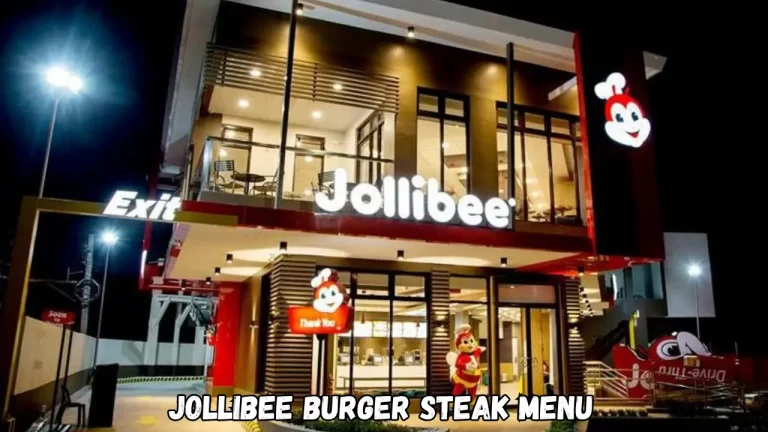Jollibee History & Background | Who is the Founder of Jollibee?
Jollibee was founded in 1975 by Tony Tan Caktiong in Quezon City, Philippines, initially as an ice cream parlor named “Jolibe.” In 1978, it transitioned into a fast-food restaurant, focusing on burgers and fried chicken, which quickly gained popularity. The brand’s unique Filipino-inspired menu, including its signature Chickenjoy, helped it become the Philippines’ leading fast-food chain.

Explore the full range of your Jollibee favorites—crispy Chickenjoy, savory burgers, sweet Jolly Spaghetti, and more! Our Jollibee Menu With Prices is your one-stop guide to everything delicious. Click the button below to see the complete menu and start planning your next meal now!
Tony Tan Caktiong, born on January 5, 1953, in Davao, Philippines, is the visionary behind Jollibee’s success. Starting with a modest investment of Php 350,000 to franchise two Magnolia ice cream parlors, he pivoted to hot food offerings after noticing customer demand. His leadership transformed the restaurant into a global brand, now operating over 9,500 locations worldwide.
With the help of marketing consultant Manuel Lumba, Jollibee refined its branding and expanded rapidly, competing against global giants like McDonald’s. Headquartered in Pasig City, the company has grown into one of the world’s fastest-growing Asian restaurant chains.

The Owner Of Jollibee and His Success Story
With humble beginnings and a bold vision, Tony Tan Caktiong laid the foundation for what would become the Jollibee empire. Born to a Chinese immigrant family in the Philippines, he learned the value of hard work early while helping with his family’s small food business.
He used his savings to open a simple ice cream parlor, not knowing it would one day grow into one of Asia’s biggest fast-food empires. With persistence, smart business instincts, and a deep understanding of Filipino taste, Tony turned Jollibee into a beloved global brand.

The Humble Beginnings
Before becoming the fast-food giant we know today, Jollibee started as a small ice cream shop in Quezon City. It was never meant to be a restaurant empire—in fact, it grew almost by accident through listening to customer demand.
It All Started With Ice Cream (1975)
Back in 1975, Tony Tan Caktiong launched a small Magnolia Ice Cream outlet, equipped with nothing more than a freezer and a few tables. It was a modest operation, but it laid the foundation for something much bigger. His goal was simple: serve delicious cold treats to local families.
From Ice Cream to Fast Food
As customers started asking for savory snacks, Tony responded by adding hot meals like burgers and fried chicken. Those items quickly outsold the ice cream. Recognizing the shift in demand, he pivoted the business toward fast food—and the rest, as they say, is history.
Also see Jollibee Family Meal Menu
The Official Birth of Jollibee
Everything changed in 1978 when Tony Tan Caktiong transformed Jollibee into an official fast-food brand, marking the start of its legendary rise. With a full menu and a clear vision, the once-small ice cream parlor transformed into a uniquely Filipino fast-food experience that would soon take the country by storm.
Jollibee Is Start In 1978
In 1978, Tony rebranded his small food outlet into the very first store. It featured hot meals, burgers, spaghetti, and fried chicken—Filipino-style. That same year, Jollibee Food Corporation was founded, setting the stage for rapid growth and local market dominance.
What Inspired the Name “Jollibee”?
The name “Jollibee” was chosen to represent a happy, hardworking character—just like the Filipino spirit. The word “Jolly” reflected happiness and joy, while “bee” represented hard work and the spirit of working together. Together, they formed a lovable, energetic brand that instantly clicked with families.
The Rise of the Bee
Jollibee’s rise wasn’t just about tasty food—it was about creating a brand that people could connect with on a personal level. The introduction of its cheerful mascot, Jollibee the red bee, played a huge role in that. Dressed in a tuxedo and chef’s hat, the smiling bee stood for joy, hard work, and Filipino hospitality. Unlike the corporate feel of other fast-food chains, Jollibee felt warm, relatable, and proudly local.
The mascot quickly became a beloved icon among children and adults alike, showing up at birthday parties, commercials, and even mall events. It wasn’t just a symbol—it was a character that made every visit to Jollibee feel like a celebration. This unique branding helped the company build emotional connections with its customers, making the “bee” not just recognizable, but unforgettable.
What Makes Jollibee Different From Other Chains?
What truly sets Jollibee apart from other fast-food giants is its bold decision to embrace, not erase, Filipino flavors. While most global chains stick to Western-style menus, Jollibee proudly serves dishes like sweet-style Jolly Spaghetti, Palabok Fiesta, and the ever-famous Chickenjoy with rice and gravy. It doesn’t just cater to cravings—it caters to culture. That local twist makes every bite feel like comfort food, especially for Filipinos both at home and abroad.
Jollibee’s Expansion in the Philippines
Once the brand took off, it expanded rapidly across the Philippines. By offering affordable, tasty meals that matched Filipino preferences, it quickly became a go-to spot for families, students, and workers alike. The buzz around Jollibee grew stronger with each new branch.
A Household Name By the 1980s
By the mid-1980s, Jollibee had opened dozens of locations nationwide and had become a beloved household name. It outperformed foreign brands by offering a unique mix of Filipino flavor, excellent service, and strong cultural identity that locals could proudly call their own.
The Power of Local Flavor
What truly gave Jollibee an edge was its deep understanding of the Filipino palate. While other chains offered standard Western menus, Jollibee introduced items like sweet spaghetti, rice meals, and palabok—foods that resonated with Filipino taste and comfort.
Going Global
With solid roots at home, Jollibee set its sights on the international market. The goal was simple yet powerful—bring a taste of home to Filipinos abroad while introducing the brand to new audiences curious about Filipino food culture.
First International Branch
In 1988, Tony Tan Caktiong opened its first international store in Daly City, California—a location chosen for its large Filipino community. It was an immediate success, offering homesick Filipinos the flavors they missed and creating a warm, familiar atmosphere far from home.
Where Is Jollibee Now Around the World?
Today, it operates in over 17 countries with more than 1,500 branches worldwide. From the U.S. and Canada to the UK, UAE, Singapore, and beyond, Jollibee has become a global ambassador of Filipino flavor—attracting both expats and curious locals everywhere it goes.
Jollibee’s Secret to Success
Jollibee’s rise to the top wasn’t just about food—it was about strategy, culture, and heart. The brand deeply understood what its audience wanted, and delivered it consistently with quality, flavor, and emotional connection. That’s the real magic behind the bee’s success.
Understanding the Filipino Palate
From the start, Jollibee crafted its menu to suit Filipino tastes—rich, savory, a little sweet, and always satisfying. Whether it’s sweet spaghetti or crispy Chickenjoy with gravy, the food feels like something your Lola (grandma) would make—only faster.
Strong Marketing & Emotional Advertising
The commercials are famous for tugging at the heartstrings. Whether it’s a love story or a family reunion, their ads go viral for their emotional depth. This kind of storytelling creates loyal fans who see Jollibee as more than just a place to eat.
Cultural Impact
Jollibee has become a cultural icon in the Philippines and beyond. It’s woven into the lives of many Filipinos—from birthday parties and first dates to Sunday family lunches—creating memories that last a lifetime.
More Than Fast Food — It’s a Filipino Symbol
Jollibee isn’t just a brand; it’s a symbol of Filipino pride and resilience. It represents local success on a global scale and stands as a reminder that a homegrown idea can stand shoulder-to-shoulder with the biggest names in the world.
Also see Jollibee Beverages Menu
The Jollibee Craze Among OFWs
Overseas Filipino Workers (OFWs) have a deep emotional bond with Jollibee. For many, it’s their first stop after landing back home—or a weekend treat in foreign lands. The taste of Jollibee reminds them of family, home, and everything they miss while away.
Challenges Along the Way
Jollibee’s journey hasn’t been all smooth sailing. Like any growing brand, it faced its share of bumps—especially as it expanded into foreign markets. But with every setback, Jollibee learned, adjusted, and came back stronger than ever.
Struggles in the Global Market
Breaking into international markets wasn’t easy. Jollibee had to win over non-Filipino customers who were unfamiliar with its unique flavors. Some branches even had to close due to cultural mismatches, but the company kept refining its approach with every experience.
Competitors and Adaptation
Going head-to-head with global giants like McDonald’s and KFC wasn’t a small feat. Jollibee’s answer? Stay authentic, but stay flexible. They adapted menus, improved store design, and kept emphasizing what made them different—heartfelt service and local flavor.
Jollibee in the Digital Era
Jollibee embraced digital transformation with open arms. From online delivery to mobile apps, the brand evolved with the times—ensuring it stayed relevant for younger, tech-savvy generations who live life online.
Social Media and Viral Ads
Jollibee has mastered the art of making people laugh, cry, and feel connected—all through their social media campaigns.
- Heartwarming video ads like the “Kwentong Jollibee” series often go viral, racking up millions of views.
- The brand smartly uses emotional storytelling to resonate with Filipino values like love, family, and sacrifice.
- Jollibee actively engages with fans through fun challenges, memes, and replies on platforms like Facebook, TikTok, and Instagram.
- Their mix of humor and sentimentality keeps people sharing, tagging, and talking.
New Innovations in Menu and Ordering
Jollibee isn’t afraid to evolve with the times. To keep up with customer expectations, they’ve embraced smart innovations:
- Self-service kiosks in stores for faster, smoother ordering.
- A user-friendly mobile app and website for convenient delivery and takeout.
- New menu items like cheesy fries, burger steak bowls, and plant-based options to keep things exciting.
- Limited-time offers and seasonal specials that create buzz and keep people coming back.

Looking for variety and value in one meal? The Jollibee Mix & Match Menu lets you enjoy more variety at an affordable price. Pick and pair your favorite items like Chickenjoy, Jolly Spaghetti, Burger Steak, and more. It’s a fun and flexible way to satisfy your cravings—click below to see the full menu and start mixing your perfect meal!
Final Thoughts
Jollibee’s story is more than just about burgers and fried chicken—it’s a tale of vision, resilience, and staying true to one’s roots. From a small ice cream shop to a global fast-food empire, Jollibee has proven that local flavor can conquer the world.
It continues to bring joy to millions by serving food that speaks to the heart. Whether you’re in Manila or New York, stepping into a Jollibee feels like coming home—and that’s the secret sauce that keeps people coming back for more.







